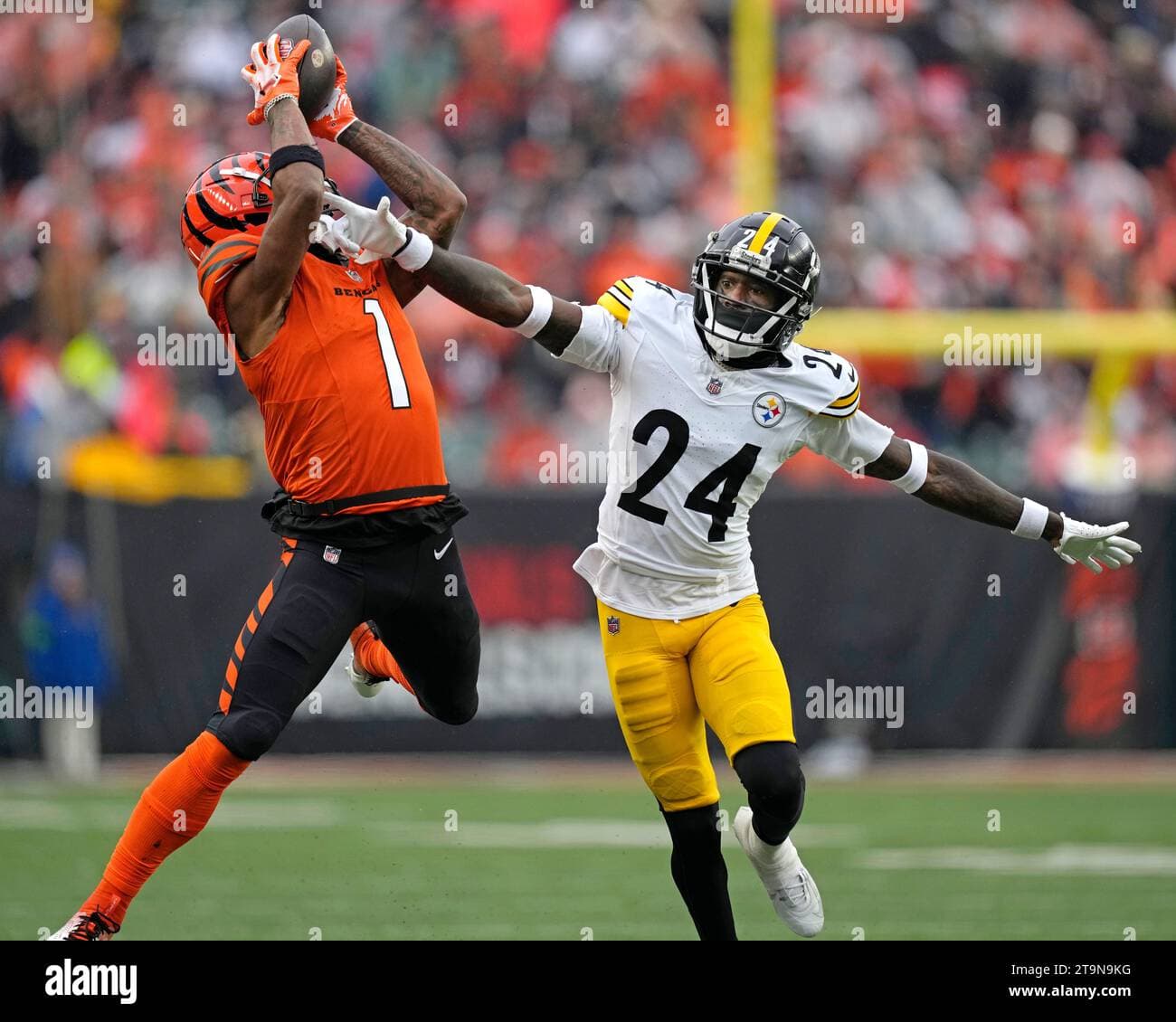Ja'Marr Chase suspended one game, Bengals face immediate offensive test
The NFL suspended Bengals receiver Ja'Marr Chase for one game on November 17, 2025 after he was found to have spat on Steelers cornerback Jalen Ramsey. The penalty removes a primary playmaker during a critical stretch of the season, raising questions about discipline, team strategy, and the broader responsibilities of elite athletes.

The NFL imposed a one game suspension on Ja'Marr Chase on November 17, 2025 after league investigators determined he spat on Steelers cornerback Jalen Ramsey during recent AFC North play. The punishment removes one of Cincinnati's most dynamic offensive weapons at a pivotal point in the season and underscores the league's continued effort to police player conduct on and off the field.
Chase's absence will force the Bengals to reconfigure an offense built around his explosive playmaking. Opposing defensive game plans have long keyed on him, and his ability to stretch defenses vertically and create mismatches inside has been central to the Bengals' identity. Without Chase, Cincinnati must rely more heavily on its supporting receivers and running game to sustain drives and maintain scoring efficiency. The burden on the quarterback will increase, as will the importance of schematic creativity from the coaching staff to generate separation for secondary targets.
Beyond the Xs and Os, the suspension carries business and cultural implications. The NFL has been attentive to incidents that draw public ire, and actions perceived as unsportsmanlike can complicate relationships with broadcast partners, sponsors, and the league's broader image. Teams and brands value the visibility that stars provide, but they also weigh reputational risk. For a high profile player like Chase, a disciplinary action can prompt sponsors to reassess partnerships and can influence how networks package narratives about marquee matchups.
The incident also intersects with the longstanding rivalry between the Bengals and Steelers, adding fuel to a rivalry already heavy with physicality and regional pride. Moments of intense on field confrontation often become lightning rods in the court of public opinion, amplified across social platforms. Spitting, as an act, carries a visceral social stigma that transcends sport. It is commonly viewed as demeaning and can inflame fanbases and locker rooms alike. The league's response signals a boundary for acceptable behavior and the potential for meaningful consequences when that boundary is crossed.
From a cultural standpoint, the episode raises questions about athlete accountability and the expectations placed on elite performers as public figures. Professional football players operate in a hypervisible environment where a single lapse can dominate headlines and distract from team objectives. Teams must balance support for players with the responsibilities of maintaining standards of conduct that reflect on locker rooms, communities, and younger fans who look to athletes as role models.
For Cincinnati, the practical test will be immediate. How the coaching staff reallocates targets, whether younger receivers seize emergent opportunities, and how the offensive line and running game shoulder extra weight will determine the short term impact on the standings. Long term, the incident is part of a larger pattern in the league, where player discipline, media narratives, and community expectations continually interact. The NFL and its teams will be watching closely to see whether this becomes an isolated lapse or a moment that prompts deeper conversations about temperament, training, and the culture that surrounds professional football.


